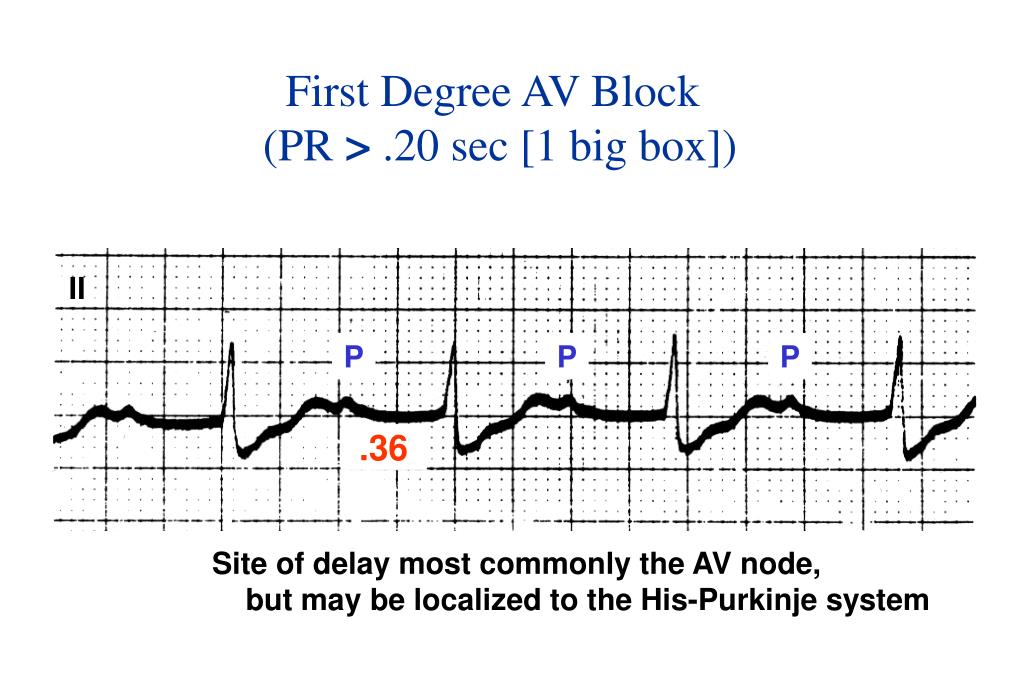

In the cardiac conduction system, electrical signals arise from the sinoatrial node spontaneously and travel to the atrioventricular node through the atria.

If transcutaneous pacing and chronotropic treatment is ineffective, prepare for transvenous pacing and obtain expert consultation.In symptomatic or unstable bradycardic patients, have the transcutaneous pacer pads placed while simultaneously administering chronotropic agents such as Epinephrine pacing is definitive treatment.Atropine can still be used as a temporizing measure while setting up for transcutaneous pacing and/or transvenous pacemaker placement in high grade blocks.It is unlikely to be affective in high grade blocks as the block is usually below the AV node Treatment with Atropine is indicated in bradycardic, symptomatic and/or unstable patients with a 1st or 2nd degree Mobitz type 1 AV block.High grade 2nd degree, 2nd degree Mobitz type 2 and 3rd degree AV blocks require admission for pacemaker placement and/or evaluation.In isolation, asymptomatic patients with a 1st degree AV block or 2nd degree Mobitz type 1 block can be discharged with follow-up.Vagal maneuver, PR interval, and QRS length can help you distinguish the two Distinguishing between a 2nd degree Mobitz type 1 and type 2 block can determine whether a patient needs admission and can be difficult to determine in a 2:1 block.Heart blocks can be a sign of underlying pathology such as MI, Lyme disease, myocarditis, structural heart disease, pulmonary embolism, autoimmune disease, electrolyte disturbances, medication side effects, Lenegre’s or Lev’s disease, increased vagal tone, or could be a normal variant.Recognizing a heart block on an EKG or monitor is important, but always start your evaluation with assessment of vitals, airway, breathing, circulation and clinically correlate your findings.


 0 kommentar(er)
0 kommentar(er)
